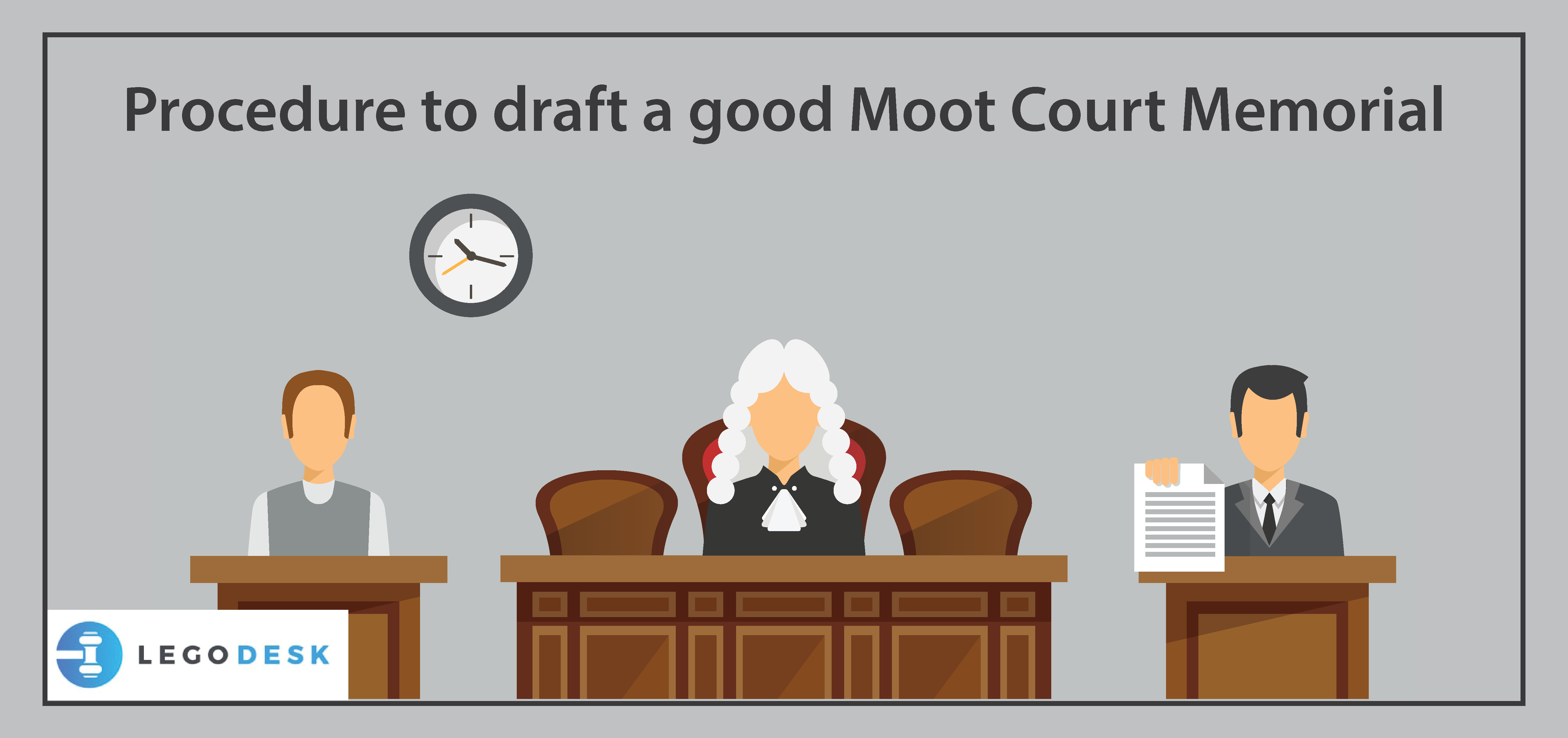The plethora of skills required to qualify as a competitive student is what drives educators to enhance the student experience. A law student or lawyer must know to draft a good court memorial. Various opportunities to learn real-time dynamics of the vocation are provided in laws schools through activities like the moot court competition, ADR competition so that a student must learn to draft a good court memorial.
The memorial is a document as important as a speech before the judge. This is because, for Judges, the moot court memorial represents the counsel’s clarity on issues and objections. The memorial enhances the counsel’s oral arguments as long as it is comprehensive, concise, and conceptualized. Here we shall look at the procedure of drafting a good moot court memorial.
Read Also – How to start a law practice with no money in 2021?
Format of Moot Court Memorial
The Moot Court memorial begins with the Table of Contents, Index of Authorities, and the statement of Jurisdiction. These three headers begin the moot court memorial indicating the party for which the memorial wishes to draw arguments. The ‘body’ of the memorial constitutes the ‘Statement of Facts,’ ‘Statement of Issues,’ ‘summary of arguments’ and ‘Arguments advanced.’ This part requires the most amount of research and well-defined headers and subheaders. Subsequently, concluding the moot court memorial is the ‘prayer’ that lays down the final intention or the interests of the clients in the dispute. The council needs to be thoroughly informed about the appropriate remedy that his client seeks in the dispute, according to the moot court problem.
Read Also – Here is the Importance of Legal Research in Legal Practice
The Procedure
Research
It is relevant to understand how to research and to develop this skill. A professor at Harvard Law School describes a method to conduct legal research using four easy steps. These steps are:
1) To Get started
2) To Consult secondary sources
3) Finding primary Authority, and
4) Updating and analyzing the controlling law.
Read Also – How to Do Legal Research?
- First Step: Begin by reading the problem given and framing the legal issues. This includes reading and analyzing the facts and finding relevant issues. From this analysis, the researcher obtains an idea of what he already knows and what he needs to learn. This is the assessment stage. It also includes making notes of the jurisdiction and the primary law involved, generating keywords or search terms that could best fit the desired results.
- Second Step: Consult secondary sources. Secondary sources provide great clarity on the subject of research and contain a wide array of information instead of starting from scratch. The researcher can refer to the legal dictionary, how the particular rule is applied, and citations to the primary source.
- Third Step: Secondary research makes it easier to comprehend the primary research due to enhanced contextual clarity. The next step, therefore, is to research primary sources for all the other relevant details and depth.
- Fourth Step: The final stage is to update and analyze the controlling law which includes reading the law such as bare acts with case laws etc. and going into further details such as its relevance, whether or not it’s binding, and its scope. At this stage, the laws referred to and cited must be good law.
Lastly, remember that the purpose of advancing arguments in a legal dispute is to convince the judge ‘otherwise’ and NOT disprove the very subject matter of the dispute.
Read Also – What are the 5 main sources of law in India
Legal quality
A moot court memorial is no good if it does not have legal quality. Legal quality is about legal conceptual clarity and the correct application of laws to facts. Students often forget to research the legal intricacies relevant to the subject matter. For instance, the relevant principles, doctrines, or framing defenses to the prima facie rule. Good research hence is not just about various case laws but also about knowing the objections that can arise. The moot court memorial must address these objections under the ‘arguments advanced’ section of the memorial. One shall compare cases that the other party could raise in their defense. It is also advised to use simple English for enhanced clarity.
Structuration
It is important to have a good structure that is comprehensive at first glance. Make sure to have a well-defined index and paginations. Define the Index clearly with points and subpoints. For example, mentioning the types of issues advanced on the index with brief notes under each issue along with sub-issues or objections if any. The content must be logically structured for the best comprehensiveness.
Read Also – Know Some Important Features of the Indian Evidence Act
Citation
Cite the relevant sources in the desired format. Make sure that the sources are authentic, preferably those subjected to copyright. This shall have a good impression on the judge and give more volume to the moot court memorial. Some authentic sources are Manupatra, HeinOnline, J store, Administrative sources, etc.
Presentation
Lastly, Spiral binding the memorial and using good quality paper shall result in a good presentation. Ensure usage of the relevant format and colors as prescribed.
Conclusion
The skills required have expanded as there is a number of students trying to strive to succeed with fewer opportunities day by day. This problem is hence simplified by incorporating mock practices such as the moot courts that give an equally overwhelming experience to a student willing to learn the application of law and hone his skills for representing his clients in real courts. Moot courts are like simulators ensuring that one adapts to the inevitable challenges he shall face, should he make litigation his vocation. For excelling in such a competition, one must ensure that he adapts all measures for an excellent moot court memorial to obtaining the best results.


